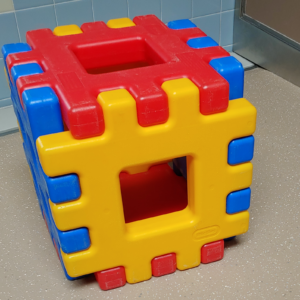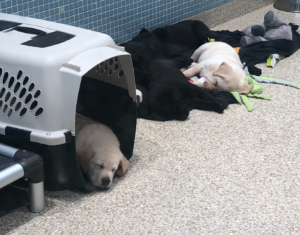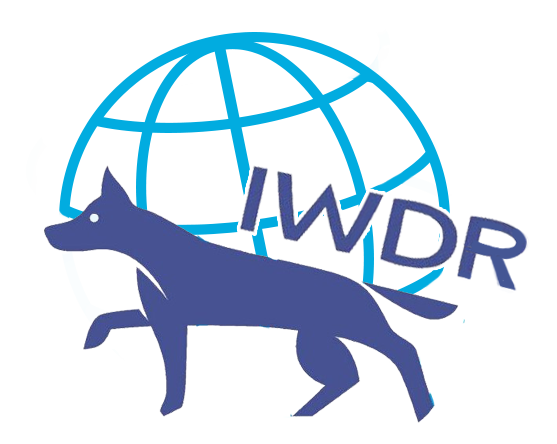Early Socialization Project - Concepts
Managing Inappropriate Interactions between littermates
Effective communication and appropriate play are important lifelong skills for dogs to learn as puppies. Effective communication prevents fighting between littermates and a calm atmosphere in the kennel. Also, many facilities run and house multiple dogs together once they return to the school to begin their formal training and appropriate play is key to facilitating calm and peaceful environments.
At 3 weeks old, puppies begin to form social bonds with their littermates and will begin to interact with each other by vocalizing and mouthing. This is all a normal process in their socialization. As puppies continue to grow, they will learn bite inhibition by playing with their siblings. It is common to want to intervene when you hear puppies yelping and vocalizing at each other but at this young age, it is important to let the puppies work things out on their own. If we intervene, puppies aren’t able to teach each other that gentle mouthing each other is ok but biting hard on their ear or tail actually really hurts. A note should be made that if you hear puppies vocalizing in distress or if the vocalizations last more than a few seconds, investigate the situation to make sure the puppies are not in harm or injured.
This video shows a puppy biting at the tail of one of its siblings trying to get to Mom. The puppy with the white collar turns around and mouths at their sibling to stop them from biting their tail.
When the puppies are out of the whelping bed, it is helpful to have hiding places such as an elevated bed, crate, waffle block structures to allow puppies to get away from one another if the situation arises.


Facilitating playing together can also prevent negative interactions and rough playing. Make sure to have enough age-appropriate hard toys (durable chew-resistant dog toys i.e. Nylabone and Kong) and safe soft toys long braided fleece toys in the litter’s environment. A good number of toys is the number of puppies in the litter plus 1. If puppies begin to play roughly in their play yard, call the puppies and redirect them with a toy.
Around 7-8 weeks old, it is helpful to split the puppies into multiple kennels to lessen the amount of rough housing in the kennel. Also, if you notice that a certain puppy tends to pick on another littermate, try to split them up so the instigator is placed with another puppy that will appropriately communicate if they are playing too roughly.
If you still experience that puppies are continuing to rough house in the kennel, a calming pheromone plugin such as Adaptil can help calm the puppies. Make sure to plug the diffuser into an outlet well out of the puppies’ reach. Adaptil also comes in a spray that can be sprayed on items and allowed to dry before placing in the kennel. Calming collars are not recommended in a kennel environment as puppies will chew the collars and the collars could be a potential safety concern.
Working on appropriate play and communication between puppies
- Allow puppies to communicate with each other when play is too rough. This is how puppies learn how to appropriately play with each other and appropriately communicate by their vocalizations and body language. If puppies yelp or scream, continue to watch the interaction and count to 5. If puppies continue to play rough, you can get the puppies’ attention by calling them to you. This will break up the interaction. If the interaction continues, alert a staff member or manager and document the interaction in the litter’s education notes.
- When setting up the room, add an age and size appropriate crate and a waffle block structure (tunnel, cube, hide away) to their whelping room to break up the room
- Add a variety of fun toys (as long as Mom can have rope and soft toys) to the whelping room. Jolly eggs can be added as well.
- Ensure that there is a variety of toys in the yard when running the puppies to facilitate group play
